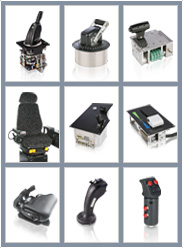News & Events
Youth Football Championships – OBYFA Events
- November 25, 2015
- Posted by: admin
- Category: Sport

Many in the west too often think of Beirut as a city scarred by war and terror. But the capital of Lebanon is a beautiful, modern city, one utterly remade after the country’s civil war ended in 1990. Gleaming skyscrapers tower over historic and pre-war modernist architecture, drenched in color and bathed in sunlight. It provides no end of inspiration for Serge Najjar, whose gorgeous photos of the city fill his Instagram.
The 41-year-old photographer loves his city, and seems to find striking symmetry and whimsical geometry at every turn. The minimalist photos filling his Instagram feel unexpected and sometimes seem to defy gravity. “Beirut is a wonderful place for an architectural freak like me,” he says. “Construction has been booming since the end of civil war and the country has a rich variety of buildings.”
Najjar is an unlikely, almost accidental photographer. He’s been a finance lawyer for 20 years, and never gave photography much thought until 2011, when his mother signed him up for a class taught by a friend. He took to it immediately, and soon found himself photographing almost everything he saw. “Photography made me realize that I didn’t know my country as well as I thought I did—that it was possible for me to look at it with a new eye [and] redefine what I saw through my lens in a subjective way,” he says.
He very obviously had a knack for it. Within weeks of starting his Instagram account, Instagram featured him on its blog. That led to a huge audience—more than 58,000 followers at the moment—and a nomination for the prestigious Prix Pictet award. That encouraged him to upgrade from his iPhone to a Canon EOS5, though he occasionally shoots with a Mamiya 6×6 or an old Zeiss that belonged to his father. “I guess that what I enjoy mostly is the act of creating,” Najjar says. “And what is even more enjoyable in photography is creating with real life, with what you see around you and that often goes unnoticed by others.”
Najjar usually gets up at 5 am and drives around the city, stopping whenever he sees something striking him. Sometimes he shoots from the street, other times shoots from a neighboring building to get a better view. If someone happens to be in the frame, he’ll ask permission to take their photo. Other times, he simply waits for something interesting to happen, like the construction worker jumping in his image Escaping Flatland. “I love it because it’s a picture I could have missed, and I didn’t,” Najjar says.
He has an eye for quirky and unusual scenes. Once while driving outside Beirut he stumbled on a replica of French architect Le Corbusier’s angular, futuristic Chapelle Notre Dame du Haut. He snapped the photograph Leb Corbu, which shows a man staring pensively from one of its dark recesses. “I still smile whenever I think of this weirdly shaped, stolen architecture,” he says.
Najjar mostly shoots in Beirut, where he was born and raised. He says he’s used to the city’s dangers—so much so that the horrific bombing in southern Beirut on November 12 wasn’t particularly shocking. “It is sad to say but we are very familiar [with] danger in Lebanon,” he says. “We have been living with it all our life—from wars to terrorism to injustice, political and financial crises. We have probably seen it all.”
He says the city has changed lately, and construction has slowed due to the war in Syria and unrest in the region. It’s become harder to go out with his camera and take pictures of random places like he always has without arousing suspicion. Amid the turmoil, he finds photography to be a life-affirming medium that celebrates the beauty of the everyday and finds order and art in the chaos.
“My projects are somehow a battle against our lifetime fate,” he says. “It is hard to see the light at the end of the tunnel but I somehow am obsessively trying to search for it. This is probably the message I would like to deliver: never give up. Keep on looking for the light.”








